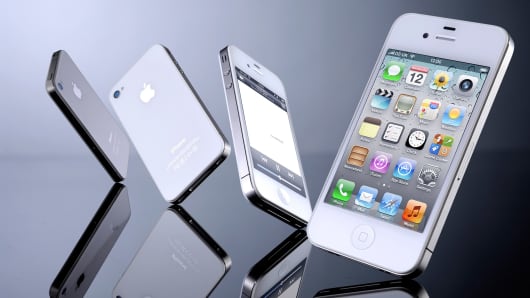The big switch was the timing—launching the product in October, instead of June. Before the 4S, every iPhone had gone on sale in the summer. I'm not sure why. That's just when the launches arrived, like the swallows to Capistrano, right around the time of Apple's annual Worldwide Developer Conference.
(Read More: New Apple iPhone to Come in Different Sizes: Analyst)
And those previous iPhones launched to massive demand and inadequate supply. That demand would then build through the rest of the year and peak in the holiday season, when Apple would ship millions of phones to all corners of the planet and still not have enough to satisfy every customer who wanted to buy one. "We're not sure when we'll be able to meet demand—we're selling every iPhone we can make" was a common refrain from Cook, who has been the point man on Apple's earnings calls for more than a decade.
So when Apple adjusted things in 2011, it seemed to make a lot of sense. Why not launch the world's hottest consumer product at the beginning of the season when people spend the most money on consumer products? Build up an enormous supply, and then do the biggest global launch possible?
Look at iPhone sales and you can see what happened. In the holiday quarter of 2011, the first full quarter of the iPhone 4S, Apple logged its largest (and most dramatic) year-over-year shipment spike ever, going from 16.24 million units the year before to 37.02 million units—a 128 percent increase. In case anyone thought that was a fluke, Apple followed that mind-blowing quarter with another: the March quarter of 2012 clocked in with 35.1 million iPhones shipped.
Apple shares took off. On Jan., 24 2012, the day of Apple's holiday season earnings report, Apple stock closed at $420 per share. The next day it spiked more than 5 percent on the earnings blowout, and went on a nearly uninterrupted climb upward until early April, where it peaked above $630. It sold off a bit until Apple's next quarterly report—another blowout—bumped around for a month, and then went on another pretty steady climb to just over $700.
We all know where it went from there. The stock has tumbled more than 40 percent to just below $400, very close to where it was before that first earnings report after the iPhone 4S launch.
So here's my theory about what went wrong: By moving the iPhone launch date to the holiday quarter, Apple unleashed some unintended consequences. Mainly, it introduced an era of unpredictability and volatility to iPhone sales. Look at the trend in iPhone sales before the December 2012 quarter and then after. What seemed like a major acceleration in sales growth after the switch was likely fueled by Apple creating a new customer habit around waiting for big holiday launches.
(Read More: Apple Earnings: What Shareholders Will Watch For in Report)
A couple of other events exacerbated the problem. One was a tough comparison: That blowout holiday quarter in 2011 happened to be a week longer than usual, making the results look even more impressive. And that next quarter, where iPhone shipments dropped less than 2 million units? It happened to coincide with a major iPhone launch in China, Apple's fastest-growing market. Those are two things that haven't repeated in the same way this year.
It took investors a little more than a year to figure out what was going on—that the huge spike in earnings growth was temporary. As a result, Apple shares have reacted harshly (some might argue, too harshly) to the downside.
So what about the other problems that critics say afflict Apple stock? What about the margins under pressure, and the stiffer competition from other hardware makers?
Here's how I see it: Apple's margins are lower every two years. It's because Apple updates the design of the iPhone, its highest-margin product, and shoulders a lot of costs up front from new manufacturing expenses. The 38.6 percent margin Apple reported last quarter was the same as the margin two years earlier when it was ramping up production of its iPhone 4. In the March quarter two years ago, Apple reported 41.4 percent margins, which is notably higher than the 38 percent where Apple guided for 2013's March quarter. But don't forget that Cook & Co. just refreshed the iPad and introduced a low-cost iPad mini a few months ago. So it's reasonable to expect margin expansion to take longer this time.
That's not to say Apple is home free. Samsung is a formidable challenger in smartphones, and it is making lots of noise in tablets, along with Amazon and Google. But remember how people said in September that the $199 Kindle Fire HD meant Apple could never hope the iPad mini would be a hit at $329? Well, it is.
All that means is that Apple is not doomed, as some would have us believe. It hasn't lost its cool, though some rivals have certainly gotten cooler.
The challenge for Tim Cook and the rest of his team at Apple is to cut ties with the chaos of the last 18 months, and get back into a rhythm.



